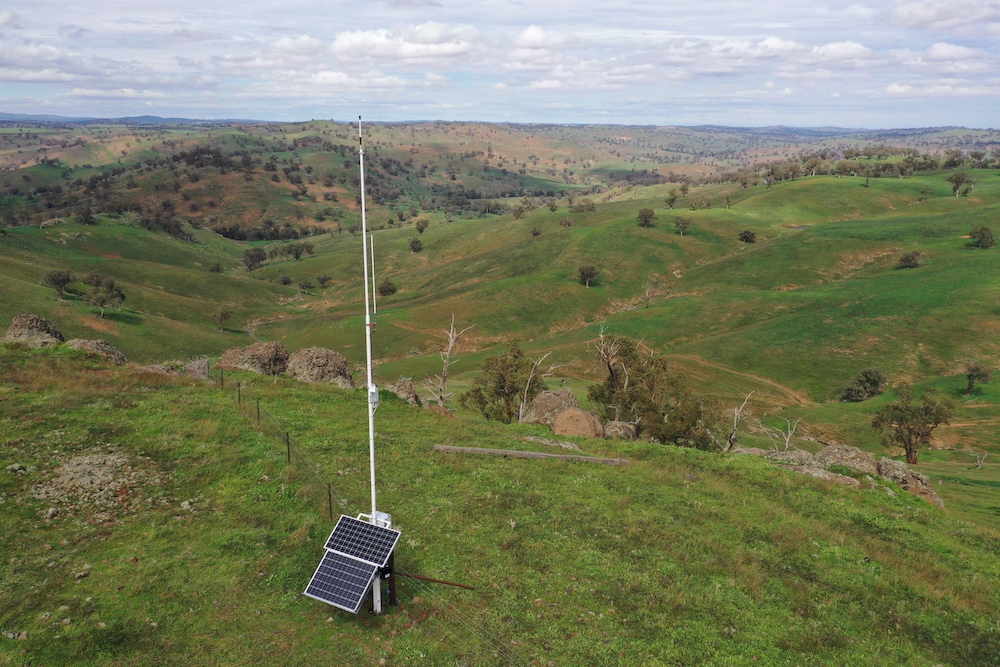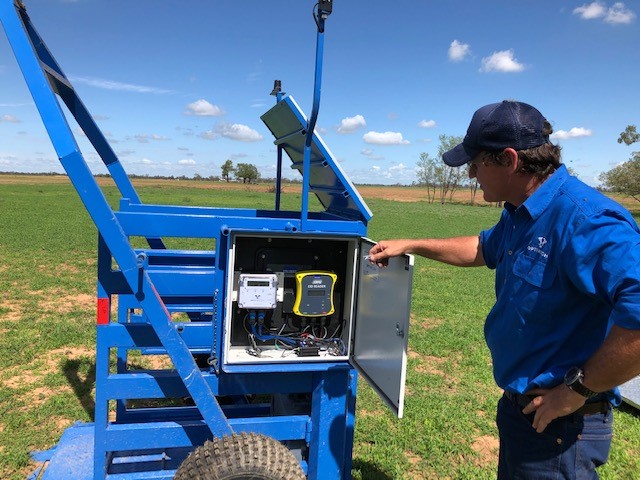The United Nations declared 2012 the International Year of Co-operatives and Australia marked it as…
Smart farms of the future

One of the major changes we will see over the next 10 years will be the accelerating spread of smart farms � IoT and associated use of the �Big Data� derived from it. Information technology portal, TechTarget, defines the IoT as �a system of interrelated computing devices, mechanical and digital machines, objects, animals or people that are provided with unique identifiers (UIDs) and the ability to transfer data over a network without requiring human-to-human or human-to-computer interaction�.
Science fiction writer, William Gibson once said � �the future is here, it�s just not evenly distributed�. And in some industries, such as mining, this is absolutely true. For large mining companies such as BHP, Rio Tinto and Fortescue, the age of the IoT is already here. It has also arrived in some pockets of agriculture, particularly horticulture, but agriculture�s adoption of the technology is generally lagging behind other industries.

It is partly to address the slow take up of agtech and the IoT, that the NSW Government is running Farms of the Future, a pilot program on three farms around regional NSW. The program is designed to showcase the benefits and opportunities agricultural technology (agtech) and the IoT can deliver for drought resilience, improved productivity and enhanced water security.
Led by the NSW DPI, the Farms of the Future pilot has installed a range of commercially available connectivity solutions and field sensor technology on three properties to test and demonstrate the benefits that can be delivered to farming via agtech and IoT.
The three pilot farms � all family farms situated in Blayney, Narromine and Coonamble � cover the diverse climate, topography and a range of farming practices that characterise regional NSW, including dryland cropping, irrigation, livestock farming and viticulture.
Agtech installed across the three pilot properties include water monitoring for stock, irrigation management, soil moisture monitoring, weather and crop-data collection, cattle monitoring, stock tracking, general farm communications, security monitoring and farm safety management.

(Photo courtesy of Scott McKinnon, NSW DPI.)�
To determine how to best address on-farm connectivity challenges, the pilot is using a mix of connectivity options depending on the sensor and coverage needs of each farm, including: farm-wide Wi-Fi; mobile 3/4G; satellite; and narrowband connectivity that does not require large bandwidth and complements existing services.
According to NSW Deputy Premier and Minister for Regional NSW, John Barilaro, �we are helping to develop technology that can help farmers boost their productivity and profits by giving them access to real-time, accurate data to monitor livestock, crop health, staff on-site, and water levels, which all contributes to the success of a farm�s business.
�Through this pilot, we are testing commercially available technology including soil moisture sensors, water tank monitors, weather and crop sensors, in-paddock livestock weighing scales and stock tracking collars. We are also working with farmers, technology providers and local connectivity network providers to understand how we can best help farmers to take advantage of available technology.�
NSW Deputy Premier and Minister for Regional NSW, John Barilaro.
Some of the technologies that the IoT and the latest agtech is leveraging � such as RFID ear tags for livestock � have been around for decades, but the issues each wave of technology is trying to solve, remains the same.
According to Allflex Australia�s Marketing Manager Kirstyn McKay, the problems Allflex technology can solve for the producer are: reducing human error with recording of information and decision making; data recording and analysis; inefficient stock management and genetic and transferable livestock disease; on-farm labour constraints and helping reduce management fatigue amongst producers.

While demonstration farms are a useful education tool, most farmers implementing agtech will do so incrementally.
Agriwebb Co-Founder, John Fargher, cautions �that many smart farm projects come in at a level that�s too high, and farmers can form the perception that the �smart farm� is something that�s testing out new technologies or technologies that could be available in the future.�
Agriwebb is a map-based farm management software platform, focusing specifically on livestock and mixed farming enterprises. It provides day to day record keeping with a mobile app that effectively replaces a pencil and paper notebook.
�Often, when people think of a smart farm, they think of IoT technology, which is almost futuristic. That investment will need to happen, but agriculture is the least digitised industry in the world, and it is really difficult to digitise information that is in someone�s head or in a notebook or diary. There�s a big gap between what people are doing on farm today and what�s perceived as a smart farm and that is in a way a barrier to adoption of the technology.�
Agriwebb Co-Founder, John Fargher.
McKay argues that the �barriers that producers may face on the ground when implementing these sorts of technologies include familiarity, or lack of, with technology and the cost of equipment in comparison to their budget. Producers need to use the technology to its full capacity to see the results, but it takes time and training to implement and gain experience with the technology.�

Effective on-ground education is going to be extremely important to close the gap between what is ultimately possible and proven technologies farmers can start using right now. Fargher points to water monitoring as a great example of a clear return on investment.
�Checking stock watering points manually is an expensive process, particularly in the summer months, and that technology has evolved really quickly, and it doesn�t always require internet connectivity, or mobile phone reception. Although alternatives to 3G/4G have traditionally been cost prohibitive, the gap is closing. There�s a huge opportunity to bring that in as first a step along the road to what people think of as the �smart farm��.
Agriwebb Co-Founder, John Fargher.
For farmers who have progressed further along the journey towards the �smart farm�, when dealing with the avalanche of data that is called �Big Data� produced by agtech systems, things quickly become difficult. But as industries that are further developed have discovered, the task of aggregating, managing and interpreting the data is a challenge that must be met to fully realise the potential of the smart farm.
One company that is seeking to help farmers meet that challenge is Pairtree, founded by fifth generation Central NSW farmer, Hamish Munro.

�There are a lot of good experts out there doing tank telemetry, soil probes, weather stations or the whole connectivity piece really well,� he says. �So the real issue now and into the future � as running a farm becomes more technology dependent � is developing farmer friendly ways to look at the data that all those systems generate and doing something useful with it.�
Hamish explains that Pairtree is currently able to connect to 80 plus paired partners across the digital ag and agtech space within Australia. It takes the data from those partners, normalises it and makes it available in a meaningful way.
By presenting information in the Pairtree universal dashboard, the app complements and aligns the various data feeds. For example, a farmer will be able to look at the one dashboard and see how much water is in the farm�s tanks, even if those tanks use different apps, what the cattle and sheep markets are doing, and what soil moisture levels are in different fields.

Farmdeck: agtech solution from a provider
Despite the increasing number of IoT products available to Australian farmers, no Australian company is offering a comprehensive farm management solution.
AgTech companies either provide the sensors, the network, or the farm management software, but none of them provides all three.
This is a challenge Marco Delgado, Farmdeck founder and CEO, discovered in 2016 when he purchased a farm in Bathurst, NSW. Also founder and CEO of a technology company since 2006, he saw an opportunity to create an affordable yet powerful comprehensive IoT farm management solution.
�Having the expertise to take farmers through all the phases of an agriculture IoT project allows Farmdeck to offer tailored solutions as well as direct support in case of problems with any of the components. Having a single platform � single provider is a huge advantage for farmers. It makes the whole process so much simpler.�
Farmdeck Founder, Marco Delgado.
Although Farmdeck sells its own sensors, its farm management platform is still compatible with most sensors already used on Australian farms.

Farmdeck includes IoT features like water levels management, removing the need for a daily water run. It also offers rollover alerts if quad bike turns over, increasing safety on the farm. Other features offered are electric fence monitoring � which gives continuous visibility on the voltage of fences and sends alerts if it drops below a certain threshold � reducing the loss of livestock, and spraying conditions which use a weather station
and Delta-T to make recommendations.
�One of the differentiators for Farmdeck is that our basic monthly subscription already includes a lot of bonus features that don�t require any IoT investment and that we give away for free. For example, using satellite imaging, we�re able to provide NDVI information to our customers and estimate how much pasture they have left on their paddocks.�
Farmdeck Founder, Marco Delgado.
For more information, email: [email protected], or visit Farmdeck.
If you enjoyed this feature on smart farms, you might like to read our story on farming trends of 2021.








